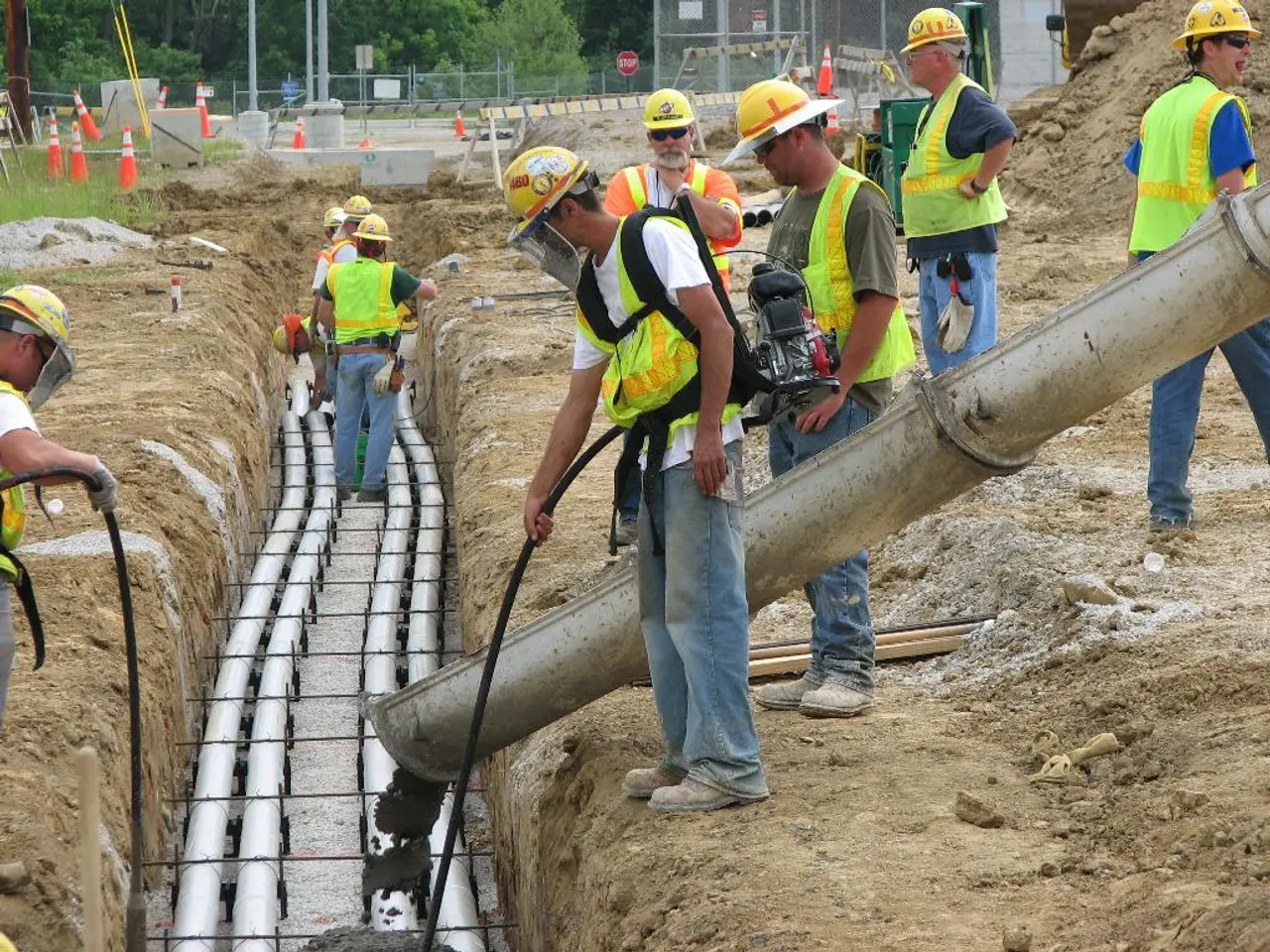Laborers tirelessly toiling under unrelenting heat daily, teetering on the edge of their lives.
In the sweltering summer heat of South Korea, outdoor workers face significant risks due to the extreme temperatures. With the summer weather becoming more extreme in recent years, the issue of heat-related illnesses among outdoor workers has become a pressing concern.
To address this issue, South Korea has implemented several measures and recommendations to protect outdoor workers during the summer months.
Mandatory Rest Breaks
As of July 17, 2021, the revised Occupational Safety and Health Standards require employers to provide a minimum 20-minute break every two hours when the perceived temperature reaches 33°C or higher. This is legally binding, with heavy penalties for violations, including up to seven years imprisonment or fines up to 100 million KRW.
Cooling Facilities and Shaded Rest Areas
Employers, such as Samsung C&T Engineering & Construction, have set up air-conditioned rest stations within two minutes’ walk from work areas and provide drinking water and glucose supplements. Some sites also offer separate rest zones for female workers to improve comfort.
Personal Cooling Gear
For high-heat exposure tasks like welding and concrete pouring, workers receive cooling equipment such as ice vests, cooling fans, and neck coolers. Sites use real-time temperature monitoring combining Korea Meteorological Administration data and onsite sensors to guide safety decisions.
Flexible Work Scheduling
Outdoor work is avoided during peak heat hours (2 PM to 5 PM). Work is adapted to cooler parts of the day, and tasks requiring level exertion are adjusted accordingly.
Health Checks and Empowerment
Daily health checks before starting work are encouraged. Workers are reminded they can stop work immediately if symptoms like dizziness or headache occur from heat exposure.
Despite these measures, challenges remain in the consistent implementation across all work sites. A labor union survey finds most Korean work sites exceed heat safety thresholds (33°C+), but adherence to rest breaks and provision of adequate rest facilities is inconsistent, highlighting gaps in enforcement and compliance.
Vulnerable Workers
Migrant workers, especially those facing language barriers, are particularly vulnerable to heat-related illnesses. This year, as of Aug. 8, a total of 20 heat-related deaths among outdoor workers have been reported. With heat waves and heavy rains alternating, the lives of outdoor workers are becoming increasingly difficult.
Kim Hoon, a formwork carpenter who has worked on construction sites since 2002, expressed concern about the impact of heat waves on his income, as he is often not paid for days when work is suspended due to extreme temperatures. He hopes for a dialogue between workers, employers, and the government to address the issue of extreme heat and its impact on outdoor workers.
Lee Jong-sun, a professor at Korea University's Graduate School of Labor Studies, stated that when temperatures rise past a certain point, work must be stopped to prevent heatstroke. Chun Jae-hee, head of the construction labor union, mentioned that shade structures and rest facilities are still inadequate at many worksites.
The government has raised the heat wave alert to the highest level, urging the public and workers to avoid outdoor activities during peak heat, stay hydrated, and follow safety recommendations. As the summer heat continues, it is crucial that all parties work together to ensure the safety and well-being of outdoor workers in South Korea.
[1] Choi, J. (2021, July 16). Construction workers face extreme heat amidst summer heatwave. Korea JoongAng Daily. Retrieved from https://koreajoongangdaily.joins.com/news/article/20210716JOON011362739.html
[2] Korean Ministry of Employment and Labor. (2021, June 23). Revised Occupational Safety and Health Standards for the Prevention of Heat Stress. Retrieved from https://www.moel.go.kr/main/main.do?method=read&seq=1236365
[3] Korean Confederation of Trade Unions. (2021, July 14). 11th Survey on the Heat Stress Situation of Construction Workers. Retrieved from https://www.kctu.org/bbs/board.php?bo_table=news&wr_id=37271
[4] Korean Meteorological Administration. (2021, July 16). Heat Wave Warning. Retrieved from https://www.kma.go.kr/wid/query/11800365
[5] Park, J. (2021, July 15). South Korea to suspend outdoor work when temperatures hit 38°C. The Korea Herald. Retrieved from https://www.koreaherald.com/economy/2021/07/15/south-korea-to-suspend-outdoor-work-when-temperatures-hit-38-c/
- Recognizing the importance of mental health in the workplace, some companies in the environmental science sector have begun integrating workplace-wellness programs to counteract the stressors related to climate change, such as offering mindfulness classes and promoting a supportive work environment.
- The rise in heat-related illnesses among outdoor workers has raised concerns not only in the health-and-wellness sphere but also in the realm of environmental science, as increasing temperatures due to climate change exacerbate these issues.
- In a bid to improve overall health and wellness, South Korea's workplace-wellness programs extend beyond heat-related issues, with some companies even incorporating science-based strategies to combat air pollution, such as implementing air-filtering systems and encouraging carpooling to reduce individual carbon footprints.




